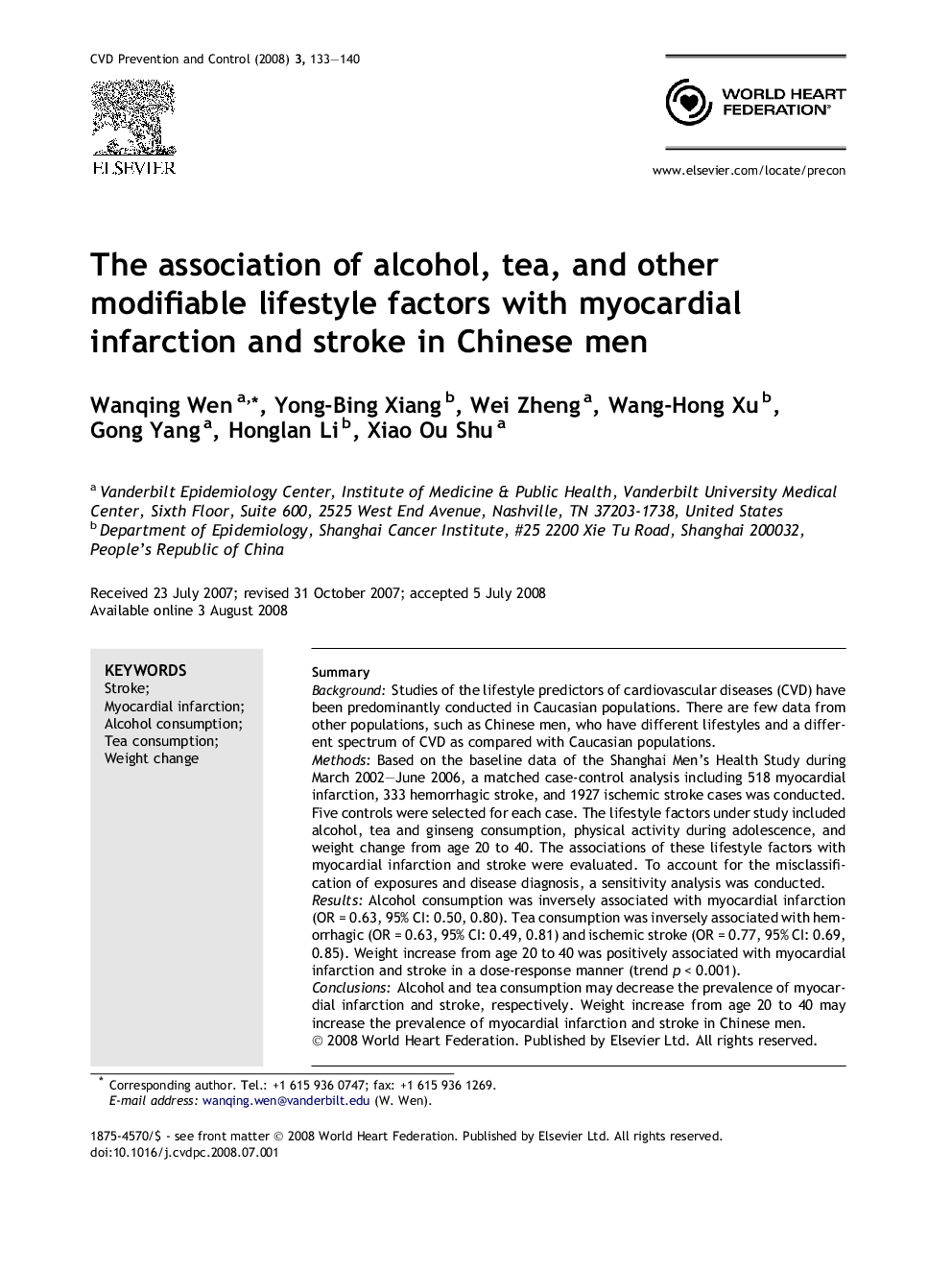| Article ID | Journal | Published Year | Pages | File Type |
|---|---|---|---|---|
| 2909754 | CVD Prevention and Control | 2008 | 8 Pages |
SummaryBackgroundStudies of the lifestyle predictors of cardiovascular diseases (CVD) have been predominantly conducted in Caucasian populations. There are few data from other populations, such as Chinese men, who have different lifestyles and a different spectrum of CVD as compared with Caucasian populations.MethodsBased on the baseline data of the Shanghai Men’s Health Study during March 2002–June 2006, a matched case-control analysis including 518 myocardial infarction, 333 hemorrhagic stroke, and 1927 ischemic stroke cases was conducted. Five controls were selected for each case. The lifestyle factors under study included alcohol, tea and ginseng consumption, physical activity during adolescence, and weight change from age 20 to 40. The associations of these lifestyle factors with myocardial infarction and stroke were evaluated. To account for the misclassification of exposures and disease diagnosis, a sensitivity analysis was conducted.ResultsAlcohol consumption was inversely associated with myocardial infarction (OR = 0.63, 95% CI: 0.50, 0.80). Tea consumption was inversely associated with hemorrhagic (OR = 0.63, 95% CI: 0.49, 0.81) and ischemic stroke (OR = 0.77, 95% CI: 0.69, 0.85). Weight increase from age 20 to 40 was positively associated with myocardial infarction and stroke in a dose-response manner (trend p < 0.001).ConclusionsAlcohol and tea consumption may decrease the prevalence of myocardial infarction and stroke, respectively. Weight increase from age 20 to 40 may increase the prevalence of myocardial infarction and stroke in Chinese men.
